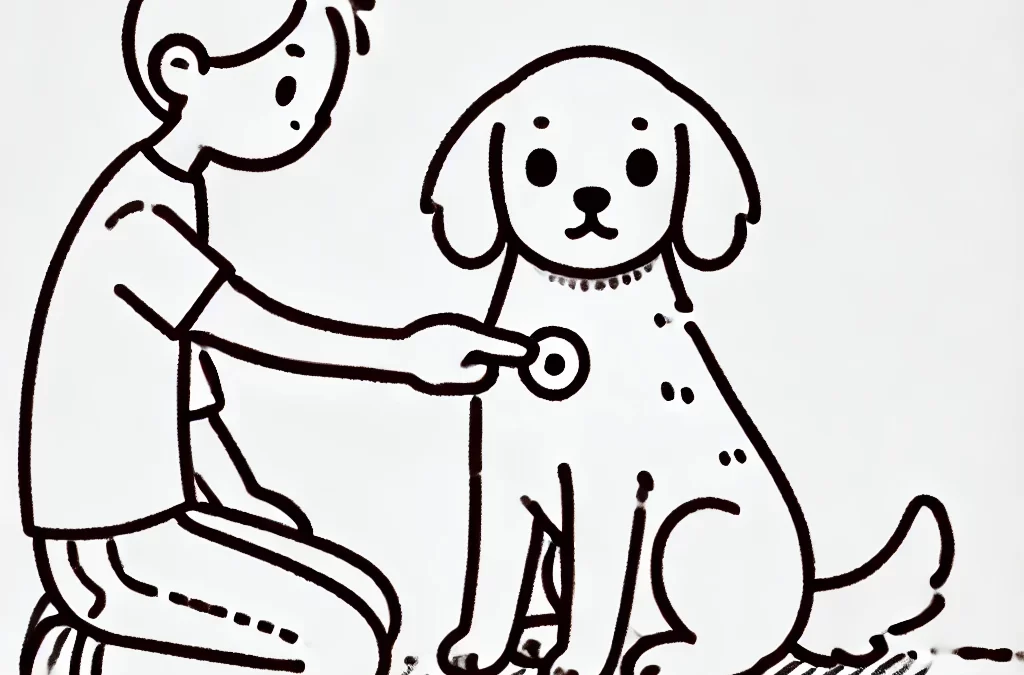
by TCMVET | Feb 11, 2025 | Dog Cancer & Tumors
For pet owners facing the heart-wrenching diagnosis of cancer in their beloved feline companions, the journey can be filled with uncertainty. While conventional treatments like surgery, chemotherapy, and radiation are commonly recommended, many are seeking alternatives to complement these options or, in some cases, as a holistic approach to overall care. One of the most promising areas is the use of natural remedies to help slow the growth of tumors in cats, providing not only physical relief but emotional comfort for both the pet and the owner.
The Power of Nature in Tumor Management
Natural remedies harness the therapeutic power of plants, herbs, and other natural substances to promote healing, reduce inflammation, and bolster the immune system. Unlike traditional treatments that primarily focus on eliminating cancer cells, natural remedies aim to enhance the body’s ability to fight cancer from within. This holistic approach does not target just the tumor itself but seeks to restore balance to the entire system, offering a comprehensive solution for managing cancer in cats.
Key Natural Remedies for Slowing Tumor Growth in Cats
- Turmeric (Curcuma longa)
One of the most well-known natural remedies for cancer, turmeric contains a compound called curcumin, which has been shown to have powerful anti-inflammatory, antioxidant, and anti-cancer properties. Curcumin can help slow tumor growth by inhibiting cancer cell proliferation and promoting apoptosis (programmed cell death). Additionally, it can support liver function, which is vital for detoxification, especially during cancer treatment.
- Cannabidiol (CBD) Oil
CBD oil, derived from hemp, is another powerful natural remedy gaining attention for its potential in cancer management. Studies have shown that CBD can slow the growth of tumors by inducing cell death in cancerous cells and reducing inflammation. Moreover, it can improve your cat’s quality of life by managing pain and anxiety, which often accompany cancer treatments.
- Reishi Mushroom (Ganoderma lucidum)
Reishi mushrooms have long been used in Traditional Chinese Medicine (TCM) for their immune-boosting properties. They contain beta-glucans that enhance immune function and promote the body’s ability to fight cancer. By supporting the immune system and improving overall vitality, Reishi mushrooms can aid in slowing tumor growth and enhancing your cat’s ability to cope with cancer.
- Astragalus Root (Astragalus membranaceus)
Often used in TCM, Astragalus is known for its ability to enhance immune function and reduce inflammation. By stimulating the production of white blood cells and boosting the immune response, Astragalus can help the body combat cancer more effectively and slow the progression of tumors.
- Essiac Tea
Essiac tea, a blend of four herbs (burdock root, sheep sorrel, slippery elm bark, and Indian rhubarb), is renowned for its detoxifying properties and potential anti-cancer effects. The tea is thought to work by improving the immune system, detoxifying the body, and inhibiting the growth of cancerous cells.
TCMVET Baituxiao: A Modern Take on Ancient Wisdom
For pet owners looking for a targeted, modern application of these ancient healing principles, TCMVET Baituxiao stands out as a product specifically formulated to help manage tumors in pets. Combining traditional Chinese herbs known for their anti-cancer properties, such as Bai Hua She She Cao and Dang Gui, with modern advances in herbal supplementation, TCMVET Baituxiao offers a balanced approach to tumor care.
- Reducing Tumor Growth: The herbs in TCMVET Baituxiao are carefully selected to work together to inhibit tumor growth and reduce the size of existing tumors. Its formulation helps manage cancer cells while promoting overall health.
- Supporting Immunity: By boosting the immune system, TCMVET Baituxiao helps your cat’s body more effectively fight off cancer and prevent recurrence.
- Minimizing Side Effects: One of the major benefits of using TCMVET Baituxiao is its ability to reduce inflammation and discomfort, helping cats stay comfortable as they undergo treatment.
Incorporating TCMVET Baituxiao into your cat’s care regimen can offer significant benefits as part of an integrated, holistic approach to managing tumors.
Why Choose Natural Remedies for Your Cat?
Choosing natural remedies for slowing tumor growth in cats isn’t about replacing conventional treatments; it’s about enhancing the body’s ability to heal itself. Natural remedies offer an alternative to harsh side effects commonly seen with chemotherapy and radiation, and they work in tandem with traditional treatments to improve overall health and comfort.
By using natural remedies like turmeric, CBD oil, Reishi mushrooms, and Astragalus, alongside products like TCMVET Baituxiao, pet owners can help their cats feel better, live longer, and face cancer with resilience.
Final Thoughts
Managing a cat’s tumor with natural remedies provides a compassionate, holistic approach that seeks to nourish and support the body rather than simply targeting the tumor. These remedies can enhance conventional treatments by improving overall well-being, boosting immunity, and reducing inflammation. Always consult with your veterinarian before adding any new treatments to ensure the best possible care for your feline companion.

by TCMVET | Feb 10, 2025 | Dog Cancer & Tumors
Cancer in cats is a devastating diagnosis, but understanding the role of the immune system can provide insights into how we can help our feline companions. The immune system is our body’s natural defense mechanism, working tirelessly to fight off infections, abnormal cells, and even potential tumors. Unfortunately, tumors can sometimes evade the immune system, allowing cancer to grow and spread. So, the question arises: How can we enhance our cat’s immune system to combat cancer and reduce the risk of tumor formation?
The Connection Between Feline Tumors and the Immune System
The immune system plays a critical role in preventing the development of cancer. It identifies and destroys abnormal cells, including those that could potentially develop into tumors. However, some cancer cells have the ability to evade or suppress the immune system, making it harder for the body to recognize and destroy them.
In cats, this immune evasion can occur in several ways. Tumors might develop immune checkpoints or mechanisms that prevent immune cells from attacking them. They can also produce substances that suppress immune responses. This means that even if a cat’s immune system is strong, certain types of cancer may still progress if the immune system is not functioning optimally.
However, by supporting and strengthening your cat’s immune system, you can help its body fight back against these abnormal cells and potentially slow the progression of existing tumors or reduce the risk of new ones forming.
How the Immune System Works in Cats
Before diving into ways to boost the immune system, it’s essential to understand how the immune system works in cats. Like humans, cats have an intricate defense network composed of various cells and organs that work together to protect them from disease. Key players include:
- White blood cells (T-cells, B-cells, macrophages): These cells are responsible for identifying and attacking harmful invaders, such as viruses and cancer cells.
- Lymph nodes and spleen: These organs filter lymph fluid and blood, respectively, trapping harmful pathogens and abnormal cells.
- Antibodies: Produced by B-cells, these proteins help neutralize pathogens and target cancer cells.
- Cytokines: These are signaling molecules that help coordinate the immune response and ensure that immune cells function properly.
The immune system’s role in cancer prevention lies in its ability to detect and destroy mutated or damaged cells before they become cancerous. However, when the immune system is compromised, it becomes less effective at carrying out these tasks, allowing cancer cells to grow unchecked.
Ways to Boost Your Cat’s Immune System
There are several strategies to enhance your cat’s immune system, both through diet and lifestyle changes, as well as through targeted supplements. Below are some ways to strengthen your cat’s immunity and potentially reduce the risk of tumors:
1. Provide a Balanced, Nutrient-Rich Diet
A healthy diet is the foundation of a strong immune system. Cats require a balanced diet rich in essential nutrients, including proteins, vitamins, and minerals. A high-quality, species-appropriate diet that mimics what they would eat in the wild is crucial for supporting overall health and immune function.
- Antioxidants: Foods rich in antioxidants, such as vitamins A, C, and E, can help protect immune cells from oxidative damage. Antioxidants neutralize free radicals in the body, which can weaken the immune system and contribute to cancer development.
- Omega-3 Fatty Acids: Omega-3 fatty acids, found in fish oil and certain plant oils, have anti-inflammatory properties that help regulate immune responses. They can support healthy immune function and may also help reduce inflammation associated with cancer.
- Zinc and Selenium: Both minerals are essential for proper immune function and are involved in immune cell production and response.
2. Incorporate Immune-Boosting Supplements
There are several supplements specifically designed to support the immune system in cats. Always consult your veterinarian before adding any supplements to your cat’s diet, but some common immune boosters include:
- Colostrum: Colostrum, a type of milk produced by mammals immediately after birth, contains antibodies and growth factors that support immune function. It can enhance immune activity in cats and help protect against cancer.
- Mushroom Extracts: Certain mushrooms, like reishi and maitake, are known for their immune-boosting properties. These mushrooms contain compounds that can activate immune cells and enhance their ability to fight off cancer cells.
- Probiotics: A healthy gut microbiome is crucial for immune health. Probiotics can help maintain a balanced gut flora, which in turn supports immune function.
3. Reduce Stress
Chronic stress is known to suppress the immune system, making it less effective at defending against cancer and other diseases. Cats that are stressed for long periods are more vulnerable to illness, including cancer. To reduce your cat’s stress:
- Provide a safe, quiet environment: Cats are sensitive creatures and can easily become stressed by changes in their environment or routine. Ensure your cat has a calm, secure space where they can retreat when needed.
- Play and mental stimulation: Regular playtime and engagement can help alleviate stress. Interactive toys, scratching posts, and puzzle feeders can keep your cat mentally stimulated and prevent boredom-induced stress.
- Consistency: Try to maintain a consistent daily routine for your cat, including feeding times, playtime, and grooming. Predictability helps cats feel secure and reduces anxiety.
4. Regular Vet Check-ups and Screenings
Regular veterinary check-ups are crucial for maintaining your cat’s overall health and ensuring their immune system is functioning at its best. Routine screenings and exams allow for the early detection of potential health issues, including tumors. The earlier a tumor is detected, the better the chances of successful treatment.
- Vaccinations: Keep your cat’s vaccinations up to date to prevent infections that can weaken the immune system and contribute to cancer progression.
- Blood tests: Regular blood work can help monitor your cat’s immune system and identify any issues early on.
5. Consider Holistic Treatments
Some holistic treatments, such as acupuncture, herbs, and homeopathy, may help stimulate the immune system and support cancer treatment. For instance, certain Chinese herbs have been shown to enhance the immune response and could potentially complement conventional treatments for cats with cancer.
Conclusion: Empowering Your Cat’s Immune System
The immune system plays a pivotal role in preventing and fighting cancer in cats. While tumors can sometimes evade the immune system’s defenses, providing your cat with a balanced diet, immune-boosting supplements, stress reduction, and regular veterinary care can help improve their chances of staying healthy and reducing the risk of tumor development.
Although there’s no surefire way to prevent cancer, empowering your cat’s immune system with these practices offers them the best possible chance of maintaining good health for years to come. Always work closely with your veterinarian to tailor an immune-boosting plan that’s right for your cat’s unique needs. With the right care, your cat’s immune system can become a formidable ally in the fight against cancer.

by TCMVET | Feb 9, 2025 | Dog Cancer & Tumors
When your cat is diagnosed with a tumor, it can be an overwhelming experience for both you and your feline companion. Traditional treatment options often focus on surgery, chemotherapy, or medication, but there is an emerging approach that focuses on holistic health: moderate exercise. The idea might sound surprising, but research suggests that exercise can be a valuable ally in boosting your cat’s immune system, potentially improving their quality of life and aiding in their recovery. In this article, we’ll explore how moderate exercise can benefit your cat’s immunity and overall health during tumor treatment.
The Link Between Exercise and Immunity: What You Need to Know
Before diving into the details, let’s first understand the science behind exercise and the immune system. For humans and animals alike, regular physical activity has been shown to improve immune function by stimulating the production of white blood cells (which fight infections), enhancing circulation, and promoting the removal of toxins from the body. This means that even during cancer treatment, gentle movement can support your cat’s natural defense mechanisms, making it easier for them to fight off infections and recover from illness.
Why Moderation is Key
Moderate exercise, unlike intense physical activity, is a low-impact approach that focuses on promoting mobility without stressing the body. For a cat with a tumor, overexertion can be detrimental, leading to fatigue or exacerbating their symptoms. Therefore, it’s crucial to strike a balance: the goal is to incorporate activities that are enjoyable and stimulating but don’t strain your cat’s body.
So, how can you ensure that your cat is getting the right amount of exercise?
1. Short Play Sessions: Focus on Mental Engagement
Cats with tumors may not have the same energy levels as they did before their diagnosis, and it’s important not to overwhelm them. Instead of long playtimes, aim for short, frequent play sessions. Ten to fifteen minutes of interactive play with their favorite toys can be enough to stimulate both their body and mind. Whether it’s a feather wand, a laser pointer, or a simple ball, keeping your cat mentally engaged is just as important as physical activity.
These play sessions help maintain muscle tone and flexibility while encouraging circulation, all of which contribute to improved immunity. The key is consistency—try to make these sessions a regular part of your cat’s day, adjusting the length of each based on their comfort level.
2. Encourage Exploration with Safe, Easy Movement
If your cat is used to being active and curious, encourage them to explore low-stress environments within your home. Cats love to wander, and even small, controlled movements can be beneficial. For example, allow them to move between rooms or investigate new areas of the house. Keep their environment safe, free of obstacles that could cause injury, and make sure there are cozy resting spots nearby for when they need breaks.
Providing opportunities for movement throughout the day will help promote lymphatic drainage, which can assist in detoxification. This type of gentle movement can also help maintain muscle mass and joint health, which is essential for overall well-being.
3. Integrating Gentle Walks or Outdoor Time
For cats that enjoy being outdoors (or if you have a safe outdoor enclosure), gentle walks can be a fantastic way to encourage movement. Walking with your cat on a leash (if they’re comfortable with it) allows them to explore and stretch their legs, enhancing circulation and offering a change of scenery.
However, always keep the exercise short and avoid hot or humid weather, as this can place additional stress on your cat’s body. The goal is to make these outdoor sessions enjoyable and stress-free, not strenuous.
4. Massage and Stretching: Indirect Exercise
When your cat has a tumor, they may experience tension or discomfort in specific areas of their body. Gentle massage can be an excellent way to enhance circulation without needing your cat to physically exert themselves. Soft strokes and light stretching can help with blood flow and prevent stiffness.
Some cats also enjoy being gently stretched—particularly the back and legs. These motions can help prevent muscle atrophy and promote relaxation. As always, observe your cat’s reactions; if they seem uncomfortable or resist, back off and try something gentler.
5. Tailor the Approach to Their Needs
Every cat is unique, and their response to exercise will vary depending on the type and stage of the tumor, their age, and overall health. It’s essential to adapt your approach based on your cat’s condition. Some cats may need more rest, while others will thrive with slightly more activity. Communicate with your veterinarian to assess how much exercise is appropriate for your cat’s specific situation.
The right balance of rest and activity can help your cat feel more comfortable, boost their energy levels, and support their immune system during treatment. Always monitor your cat’s energy levels and behavior to make sure they aren’t overexerting themselves.
The Role of Diet and Supplements
While exercise plays a crucial role in boosting immunity, it’s essential to pair it with a proper diet and supplements. Offering your cat high-quality, nutritionally balanced food is essential, especially during cancer treatment. Additionally, consider incorporating immune-boosting supplements like omega-3 fatty acids, antioxidants, and specific herbal remedies to enhance their defense system.
Herbal supplements like Chuanxiong (Szechuan Lovage), Reishi mushrooms, and turmeric can have supportive properties for cancer patients. Always consult with your vet before adding any new supplements to your cat’s routine.
Conclusion: A Gentle Path to Healing
It’s easy to assume that a diagnosis like cancer means that your cat must rest all the time, but the right amount of moderate exercise can play a vital role in maintaining their health and boosting immunity. Through short play sessions, gentle walks, safe exploration, and the occasional massage, you can help your cat stay active in a way that supports their body’s natural healing processes.
Remember, the goal is moderation—exercise should never be forced, but rather, encouraged in a way that suits your cat’s comfort level. Always listen to your cat’s cues and work closely with your veterinarian to ensure your chosen activities are safe and beneficial. With patience, love, and the right amount of gentle movement, you can support your cat through their cancer journey with strength and vitality.

by TCMVET | Feb 7, 2025 | Dog Cancer & Tumors
Chemotherapy can be a lifesaving treatment for dogs with cancer, but it often comes with side effects that impact their quality of life. While chemotherapy for dogs is generally less aggressive than in humans, many dogs still experience digestive issues, fatigue, appetite loss, and weakened immunity. Understanding how to minimize discomfort and provide proper nutritional and supportive care can make a significant difference in your dog’s well-being during treatment.
Common Side Effects of Chemotherapy in Dogs
🐶 Gastrointestinal Issues – Vomiting, diarrhea, nausea, and loss of appetite are common due to chemotherapy’s impact on fast-dividing stomach lining cells.
🐶 Fatigue & Weakness – Your dog may be more tired than usual and prefer longer rest periods.
🐶 Lowered Immunity – Chemotherapy can reduce white blood cell counts, making your dog more prone to infections.
🐶 Hair Loss (in Certain Breeds) – While most dogs don’t lose much hair, breeds with continuously growing coats (e.g., Poodles) may experience noticeable thinning.
🐶 Mouth Ulcers & Drooling – Some dogs develop mouth sores, leading to discomfort while eating.
How to Alleviate Chemotherapy Side Effects?
1. Managing Nausea & Vomiting
- Feed small, frequent meals instead of large portions.
- Offer bland, easily digestible foods like boiled chicken, white rice, and pumpkin.
- Ginger (fresh or in supplement form) can help reduce nausea.
- If vomiting persists, ask your vet about anti-nausea medications like Cerenia (maropitant).
2. Supporting Appetite & Preventing Weight Loss
- Warm up your dog’s food slightly to enhance aroma and encourage eating.
- Try high-calorie, nutrient-dense foods such as cooked eggs, lean meats, and cottage cheese.
- Consider adding bone broth or goat milk to meals for extra hydration and nourishment.
- If your dog refuses food, appetite stimulants like Mirtazapine may help.
3. Preventing Diarrhea & Dehydration
- Use probiotics (e.g., FortiFlora) to support gut health.
- Feed foods rich in soluble fiber like canned pumpkin or steamed sweet potatoes.
- Ensure constant access to fresh water and offer electrolyte solutions if diarrhea persists.
- Consult your vet if diarrhea lasts more than 24 hours or includes blood.
4. Boosting the Immune System
- Include antioxidant-rich foods like blueberries, turmeric, and omega-3 fatty acids.
- Medicinal mushrooms (e.g., Turkey Tail, Reishi) may help modulate immune function.
- Avoid raw diets during chemotherapy, as weakened immunity increases infection risks.
5. Managing Fatigue & Weakness
- Allow your dog extra rest but encourage light activities like short walks for circulation.
- Provide a comfortable, warm resting space with soft bedding.
- Consider gentle massage therapy or acupressure to ease tension and improve relaxation.
6. Caring for Mouth Sores & Drooling
- Offer soft or moistened food to reduce irritation.
- Use pet-safe oral rinses (e.g., chlorhexidine solution) to prevent infections.
- Coconut oil can be applied to gums for its soothing and antibacterial properties.
Supplements That May Help
🌿 Milk Thistle – Supports liver detoxification from chemotherapy drugs.
🌿 CBD Oil – May help with pain relief, nausea, and inflammation.
🌿 L-Glutamine – Supports gut lining health and reduces diarrhea risk.
🌿 Omega-3 Fatty Acids (Fish Oil) – Provides anti-inflammatory benefits and supports immune health.
When to Contact Your Vet?
🚨 Persistent vomiting or diarrhea lasting over 24 hours
🚨 Severe lethargy or collapse
🚨 Signs of infection (fever, swollen lymph nodes, excessive panting)
🚨 Loss of appetite for more than two days
🚨 Uncontrolled bleeding or bruising
Final Thoughts
Managing chemotherapy side effects in dogs requires a balanced approach combining nutritional support, home care, and veterinary guidance. By closely monitoring your dog’s response and making necessary adjustments, you can help them navigate treatment with greater comfort and resilience.

by TCMVET | Feb 7, 2025 | Dog Cancer & Tumors
Discovering a lump on your dog’s body can be alarming. Is it just a harmless fatty tumor, or could it be something more serious? Many pet owners hesitate between monitoring the lump at home and rushing to the vet. The key is knowing how to assess the lump properly and recognizing the warning signs that require medical attention.
This article introduces a practical, hands-on guide for pet owners to evaluate their dog’s lumps and bumps, helping you make informed decisions about when to seek veterinary care.
Step-by-Step Guide to Checking Your Dog’s Lump
🖐 1. Use the “Rule of Five” Approach
When examining a lump on your dog, assess these five factors:
1️⃣ Size – Is the lump smaller than a pea, or is it growing over time?
2️⃣ Shape – Is it round and smooth, or irregular and bumpy?
3️⃣ Texture – Is it soft and movable, or firm and attached to underlying tissue?
4️⃣ Color & Surface – Is the skin over the lump normal, reddened, or ulcerated?
5️⃣ Growth Rate – Has it changed in size within weeks or months?
🐾 2. The “Two-Finger Test”
Gently move the lump between your fingers. If it feels freely movable under the skin, it’s more likely to be benign (such as a lipoma). If it’s firmly attached to deeper tissues, it could be more concerning.
🔍 3. Observe Any Additional Symptoms
Check for changes in your dog’s behavior and overall health. Are they eating well? Losing weight? Scratching or licking the lump excessively? These clues can help determine if the lump is causing discomfort or systemic effects.
Common Types of Lumps and When to Worry
🔹 Lipomas (Fatty Tumors)
✅ Soft, round, and movable
✅ Common in older or overweight dogs
✅ Usually harmless, but should be monitored for sudden growth
🔹 Sebaceous Cysts
✅ Filled with a thick, white, or yellowish substance
✅ Can rupture or become infected
✅ Often not serious but may need draining or removal if problematic
🔹 Mast Cell Tumors (MCTs)
🚨 Often appear red, swollen, or ulcerated
🚨 Can change size rapidly due to histamine release
🚨 Require immediate veterinary evaluation, as they can be aggressive
🔹 Histiocytomas
✅ Common in young dogs, usually on the head or legs
✅ Appear as red, raised, button-like lumps
✅ Often disappear on their own, but should still be checked
🔹 Soft Tissue Sarcomas
🚨 Firm, deep-seated, and slow-growing
🚨 Often do not feel well-defined
🚨 Can be invasive and may require surgical removal
When Should You See a Vet?
📌 Immediate Veterinary Visit Required If:
- The lump grows rapidly or changes shape
- It is firmly attached to underlying structures
- There is bleeding, ulceration, or infection
- The lump causes pain or discomfort
- Your dog shows other symptoms like weight loss, lethargy, or appetite changes
📌 Monitor at Home If:
- The lump is small, soft, and slow-growing
- Your dog is acting normal with no discomfort
- No rapid changes in size, texture, or color are observed
How Vets Diagnose Lumps
If a vet visit is necessary, they may use:
🩸 Fine Needle Aspiration (FNA) – Extracting cells for microscopic examination
🔬 Biopsy – Taking a tissue sample for more detailed analysis
🖥 Ultrasound or X-rays – To check for internal masses or metastasis
Final Thoughts
Not all lumps are cause for panic, but early detection is crucial. The best approach is to regularly check your dog’s body, stay alert for changes, and consult your vet when in doubt. Being proactive can make a huge difference in ensuring your dog’s long-term health.

by TCMVET | Feb 6, 2025 | Dog Cancer & Tumors
Spleen tumors in dogs are often referred to as “silent killers” because they can grow undetected for a long time, showing minimal symptoms until they become a medical emergency. Many pet owners only realize their dog has a spleen tumor when sudden internal bleeding occurs. Understanding the risks, signs, and treatment options for canine splenic tumors is crucial for early detection and intervention.
What Are Spleen Tumors in Dogs?
The spleen is an important organ that helps with blood filtration, immune function, and iron recycling. Tumors in the spleen can be benign (non-cancerous) or malignant (cancerous). The most common types of splenic tumors in dogs include:
- Hemangioma – A benign tumor made up of blood vessels.
- Hemangiosarcoma (HSA) – A highly aggressive cancer that originates in blood vessel cells and has a high risk of spreading to other organs.
- Lymphoma – A type of cancer that affects the lymphatic system and can involve the spleen.
- Splenic Nodular Hyperplasia – A non-cancerous condition where the spleen forms abnormal nodules that can still rupture and cause bleeding.
Among these, hemangiosarcoma is the most dangerous and accounts for a large percentage of splenic tumors. It is particularly common in breeds like Golden Retrievers, German Shepherds, and Labrador Retrievers.
Symptoms of Spleen Tumors in Dogs
Early detection of spleen tumors is difficult because many dogs remain asymptomatic until the tumor grows significantly or ruptures. Some signs to watch for include:
- Lethargy or weakness – Your dog may seem tired and less active than usual.
- Pale gums – A sign of anemia, often due to internal bleeding.
- Sudden collapse – This may occur if the tumor ruptures and causes internal bleeding.
- Enlarged abdomen – A swollen belly can indicate a growing tumor or internal bleeding.
- Loss of appetite and weight loss – Gradual decline in eating and body weight.
- Rapid breathing or increased heart rate – A sign of low blood volume or oxygen deprivation.
If your dog shows any of these symptoms, seek veterinary care immediately, especially if they collapse or have pale gums.
How Are Spleen Tumors Diagnosed?
A veterinarian will typically use the following methods to diagnose splenic tumors:
- Physical Examination – Checking for an enlarged abdomen or signs of anemia.
- Ultrasound – Helps visualize masses inside the spleen.
- X-rays – Can show an enlarged spleen or signs of metastasis.
- Blood Tests – Detects anemia, abnormal white blood cell counts, and organ function changes.
- Fine-Needle Aspiration or Biopsy – Helps determine if the tumor is benign or malignant.
In many cases, a definitive diagnosis can only be made after the spleen is surgically removed and examined.
Treatment Options for Canine Spleen Tumors
1. Surgery (Splenectomy)
If a spleen tumor is detected, the most common treatment is splenectomy (surgical removal of the spleen). Dogs can live without a spleen, but if the tumor is malignant, surgery alone is often not enough to stop cancer progression.
2. Chemotherapy
For hemangiosarcoma, chemotherapy may be recommended after surgery to slow down cancer spread. However, the prognosis remains poor, with an average survival time of 3 to 6 months even with treatment.
3. Natural and Holistic Support
Some pet owners explore natural therapies to support their dog’s immune system and quality of life. Potential options include:
- Medicinal mushrooms (like Turkey Tail and Reishi) – May help support immune function.
- TCM (Traditional Chinese Medicine) herbs – Some herbal blends, like Baituxiao, have been used for tumor care.
- Dietary changes – A high-protein, anti-inflammatory diet may support overall health.
While these options cannot cure cancer, they may enhance well-being and slow disease progression.
Can Spleen Tumors Be Prevented?
While there is no guaranteed way to prevent spleen tumors, pet owners can take steps to reduce risks:
- Regular vet check-ups – Early detection through routine exams and ultrasounds in high-risk breeds.
- Avoid carcinogenic exposure – Reduce exposure to pesticides, secondhand smoke, and low-quality pet food.
- Support immune health – A balanced diet with antioxidants may help prevent cell damage.
Final Thoughts
Spleen tumors in dogs are a serious health concern, especially hemangiosarcoma, which often goes undetected until it becomes life-threatening. Regular veterinary check-ups, being aware of subtle symptoms, and acting quickly if your dog shows signs of distress can make a critical difference. If your dog is diagnosed with a splenic tumor, discuss treatment options with your vet to determine the best course of action for your pet’s quality of life.
By staying informed and proactive, pet owners can provide their dogs with the best possible care and support during this challenging time.






